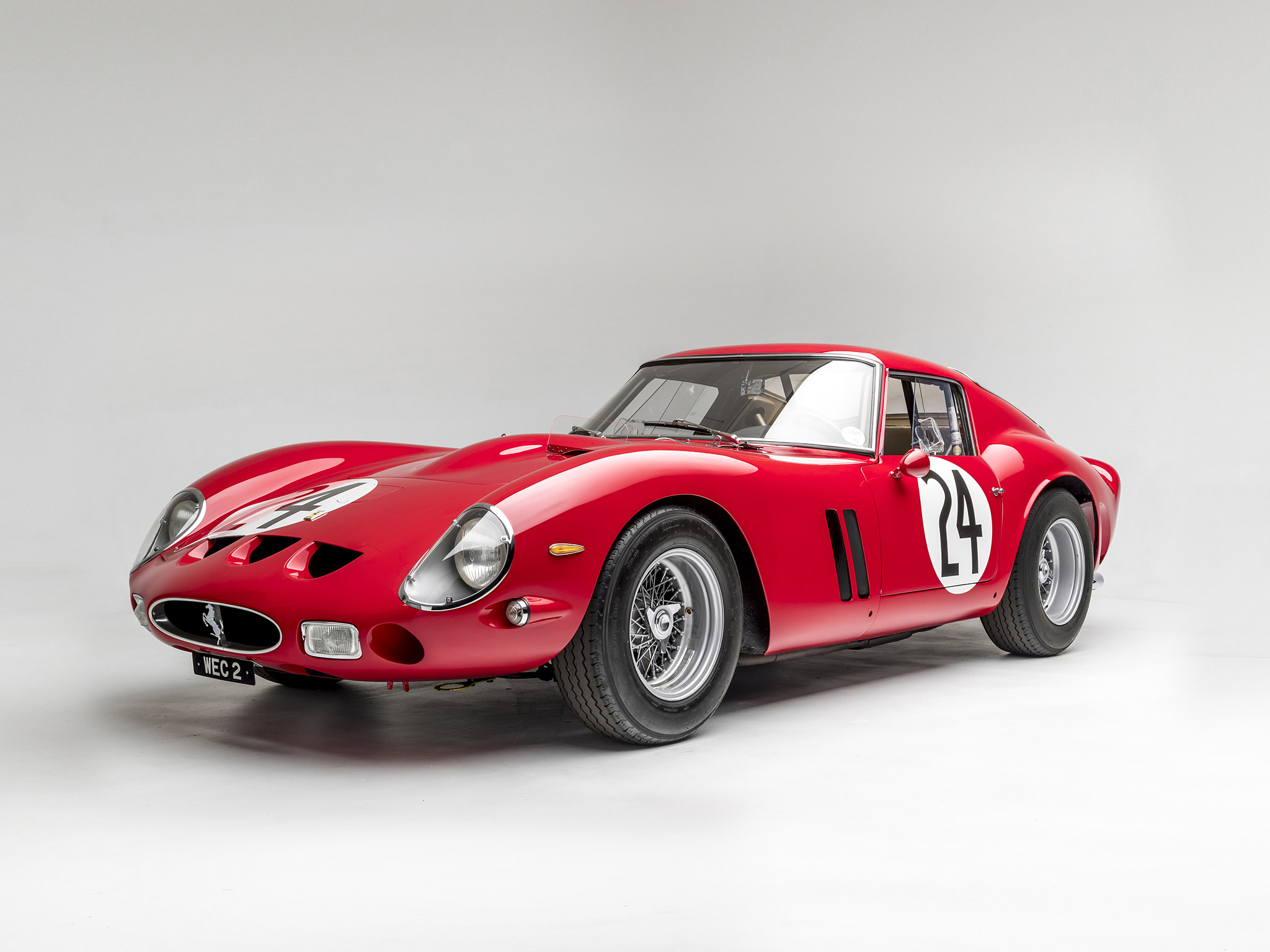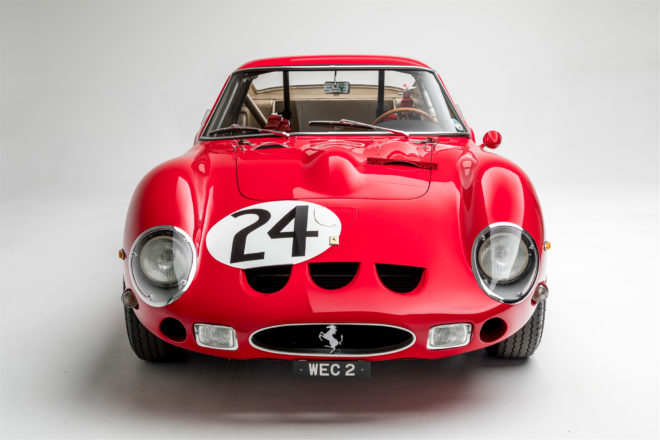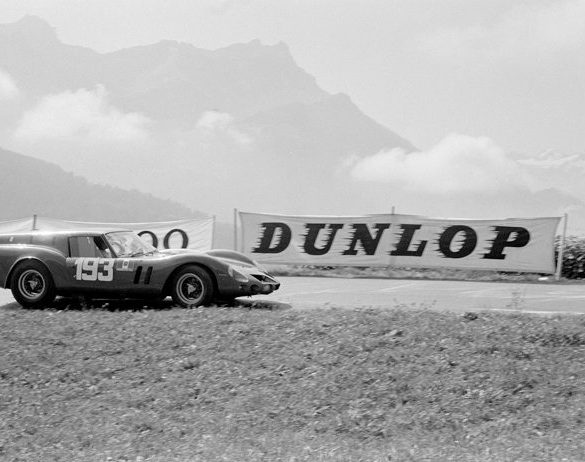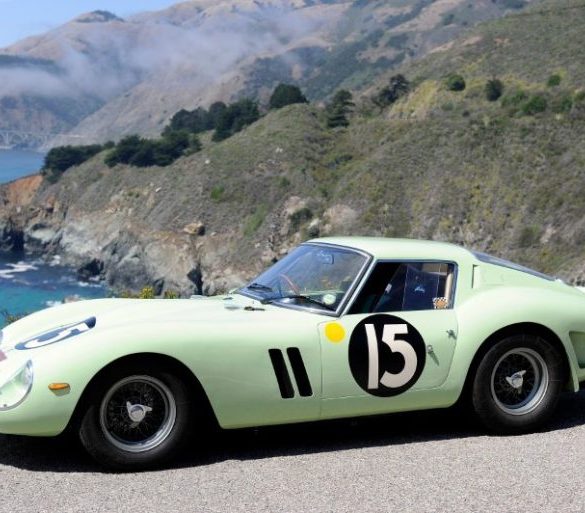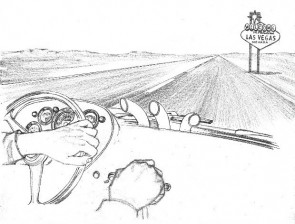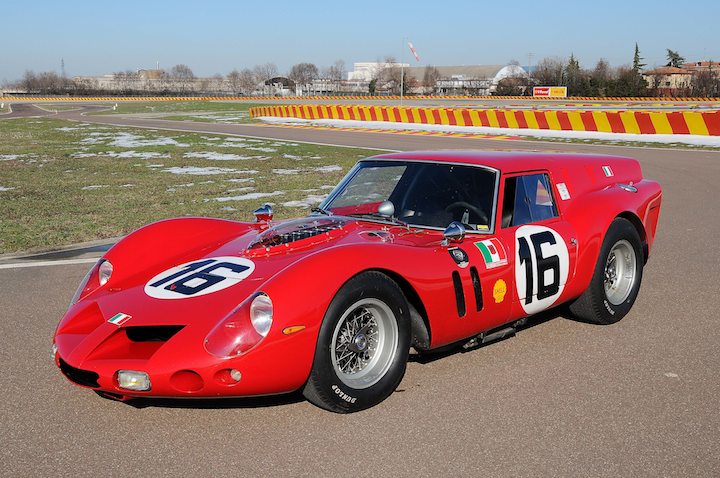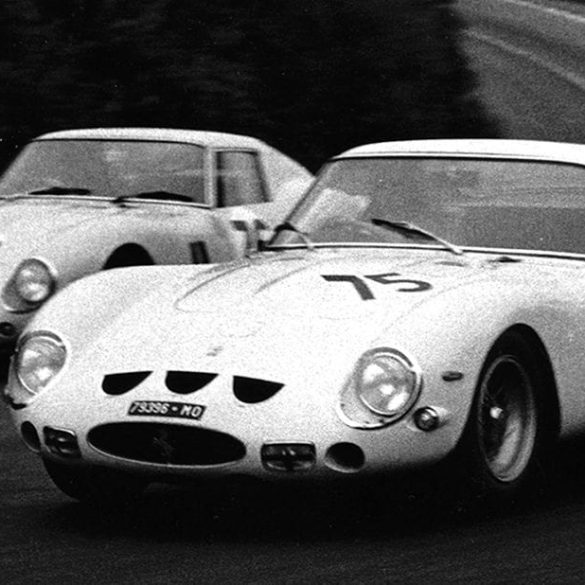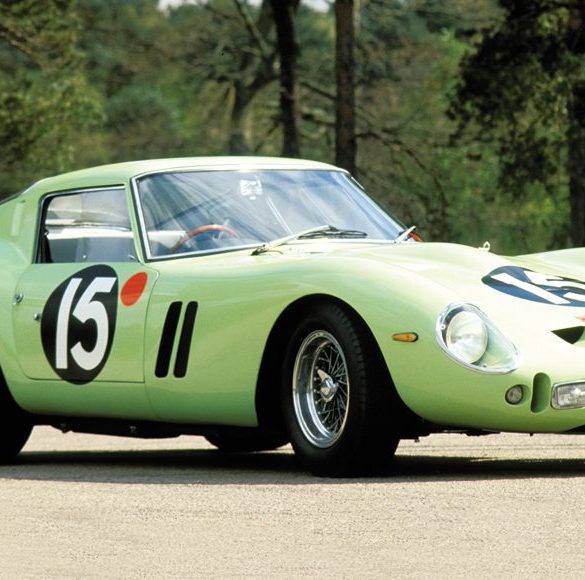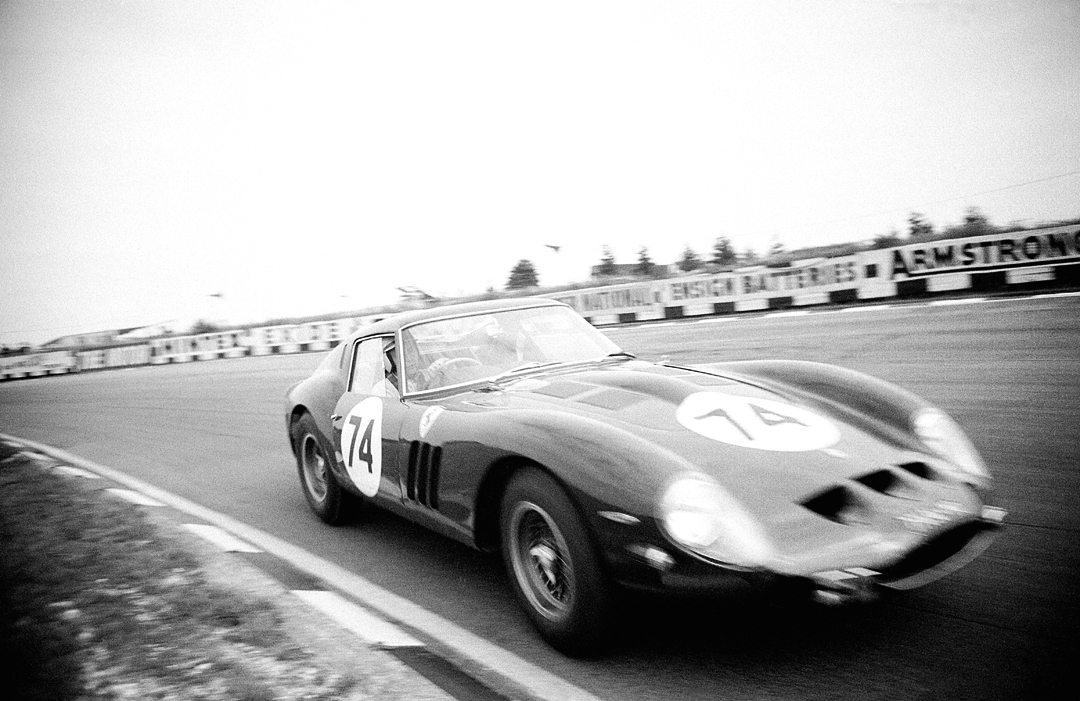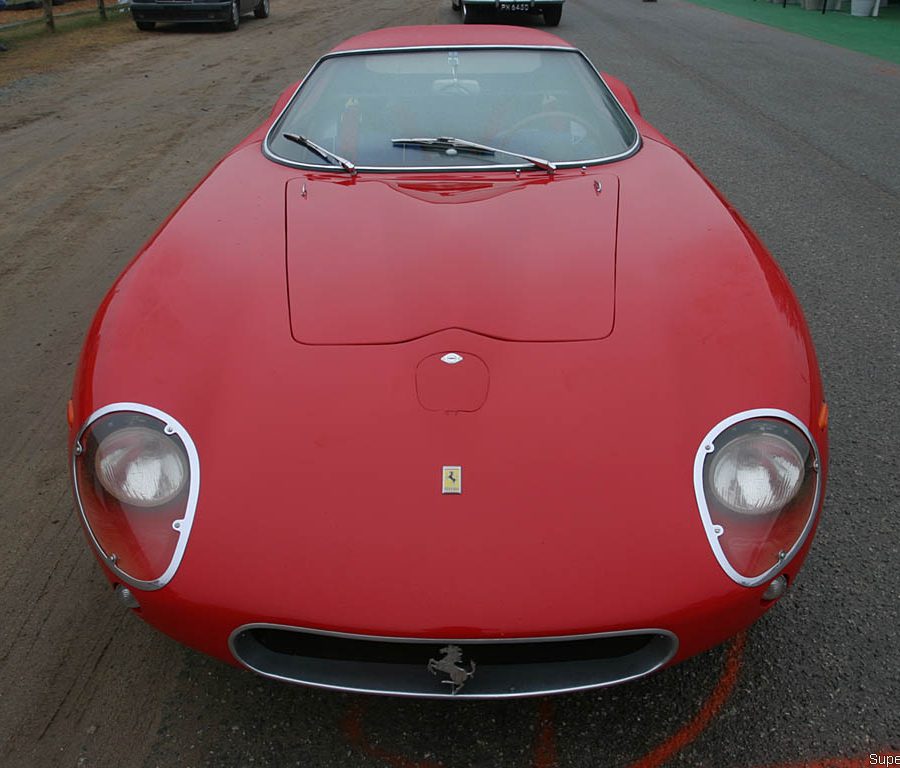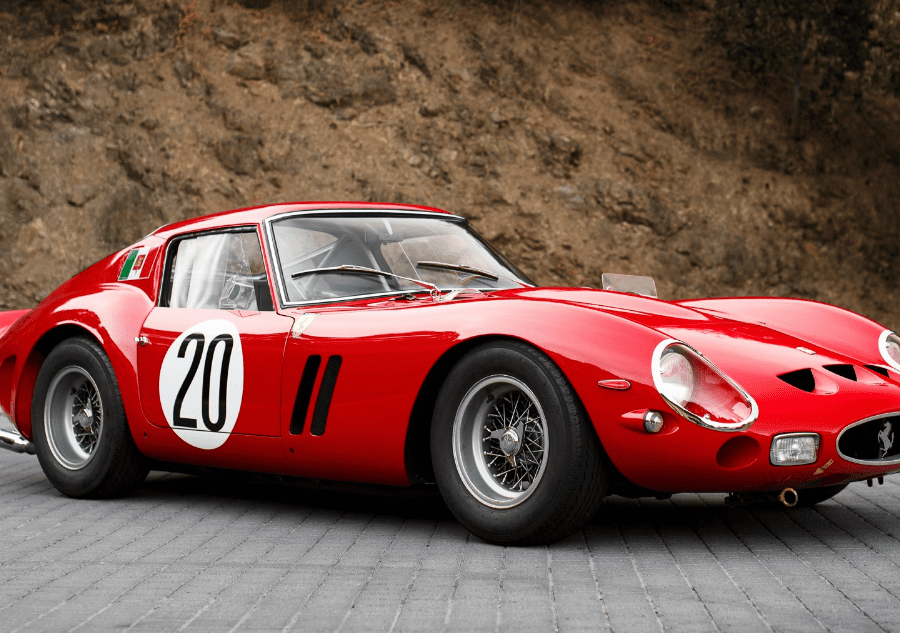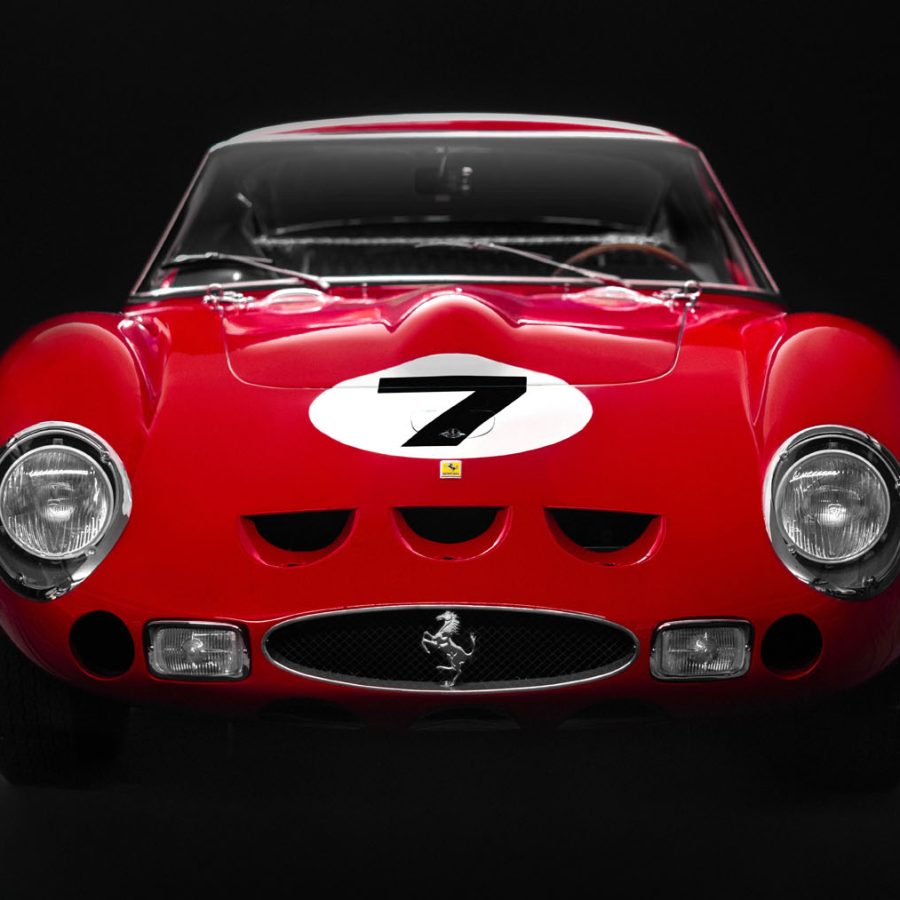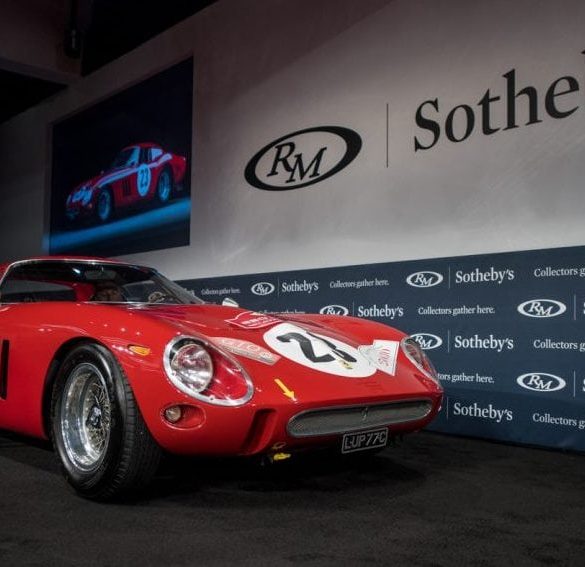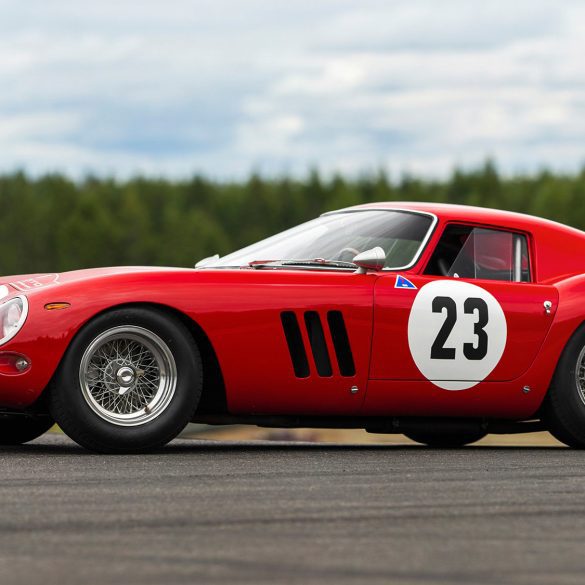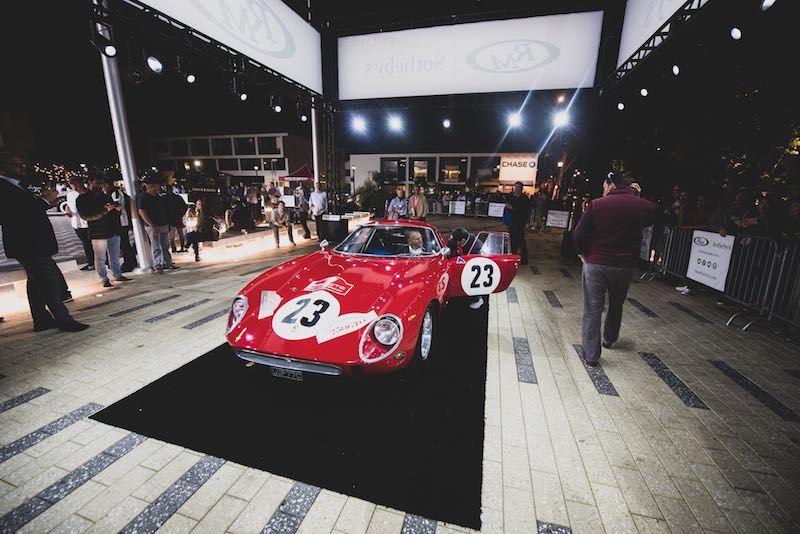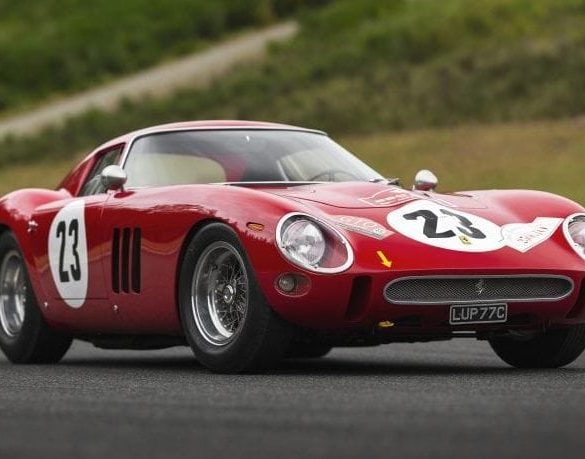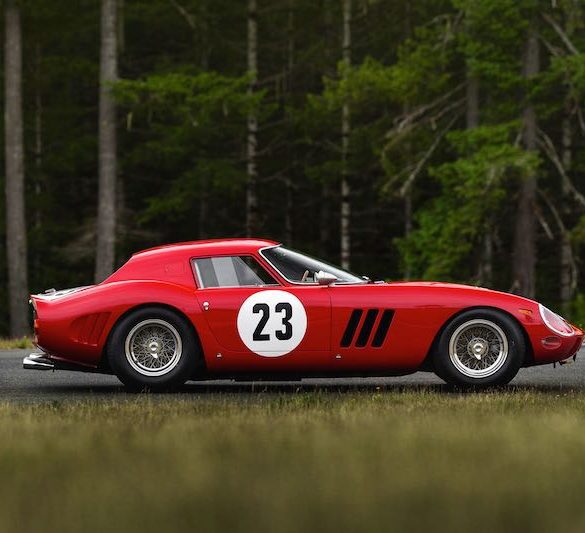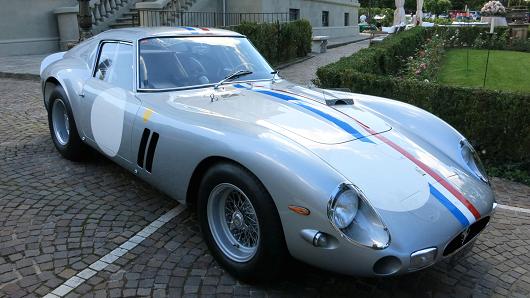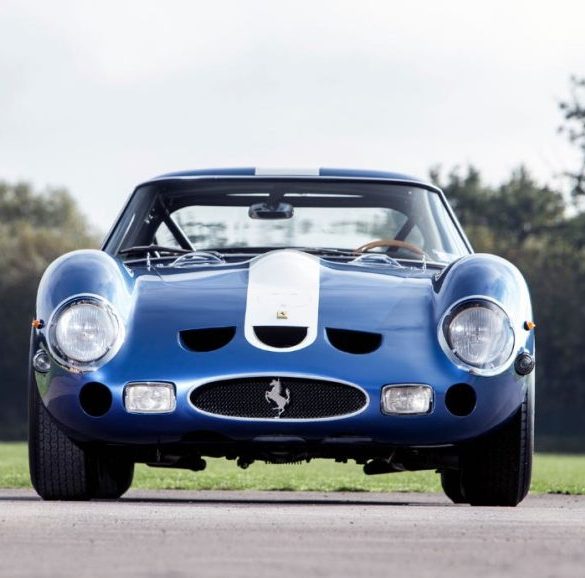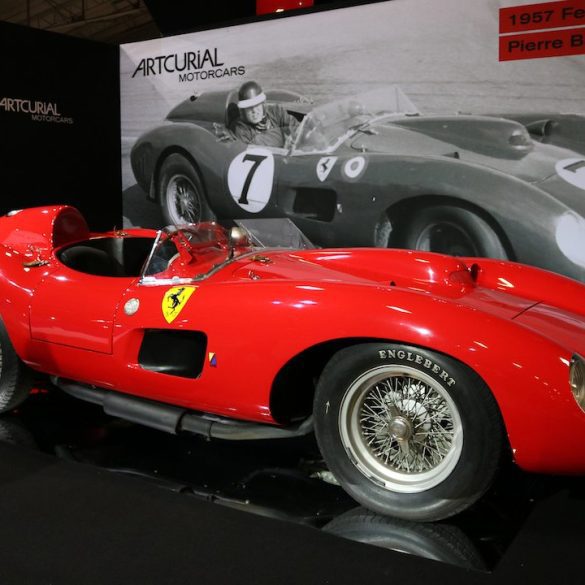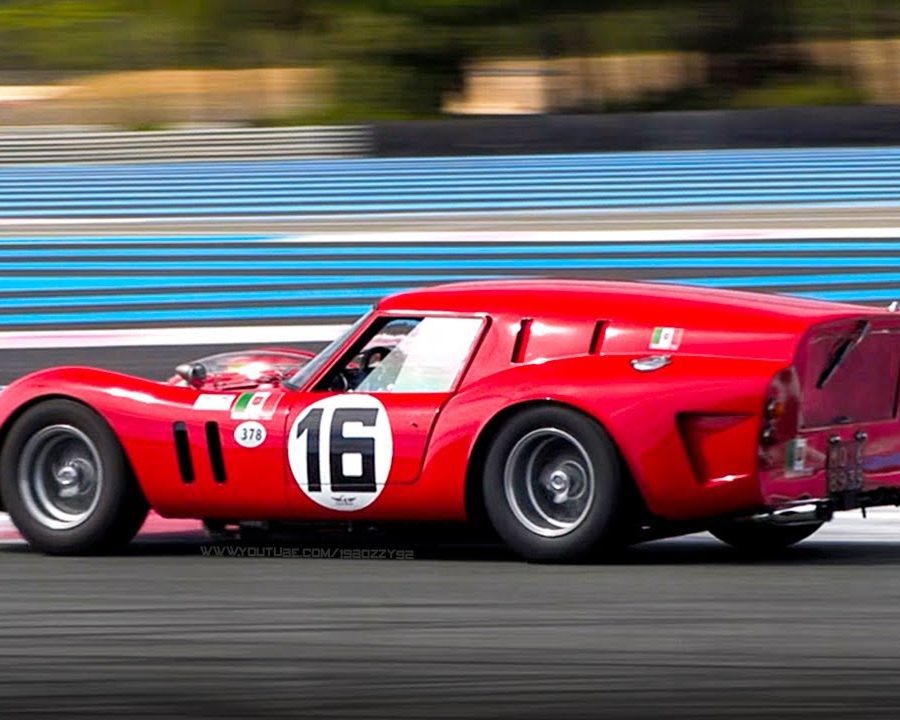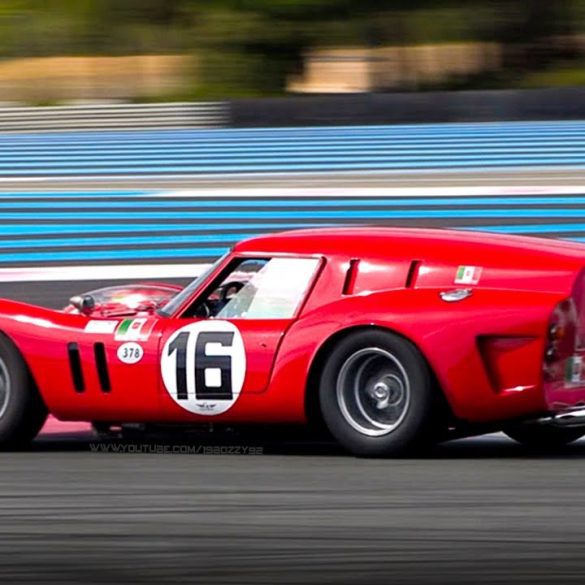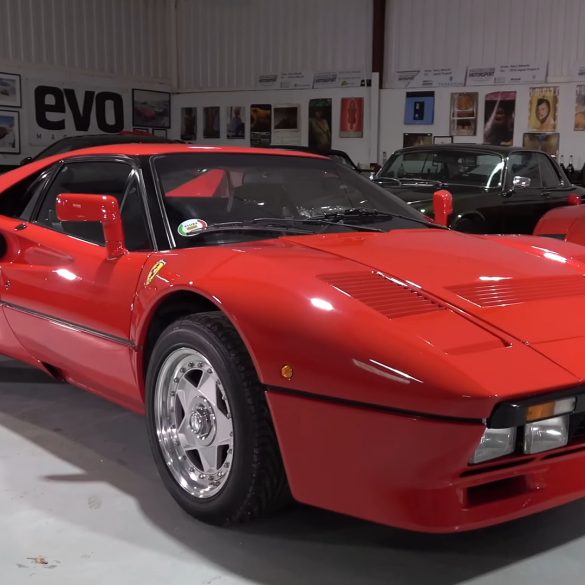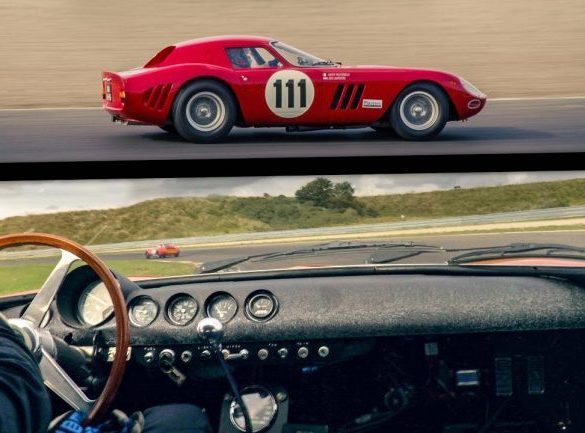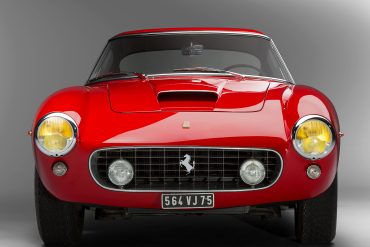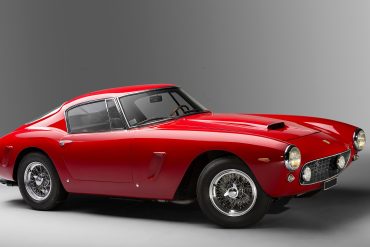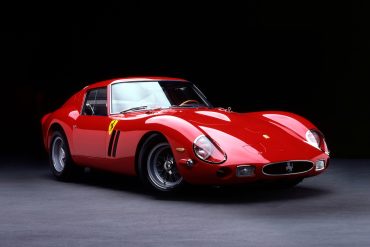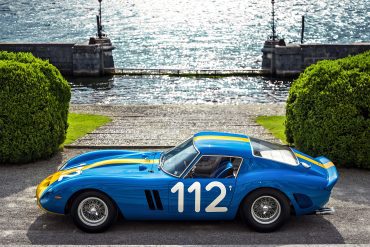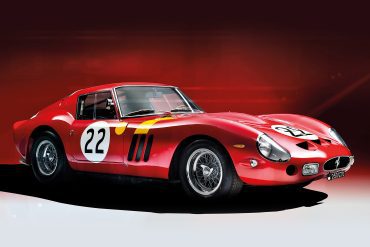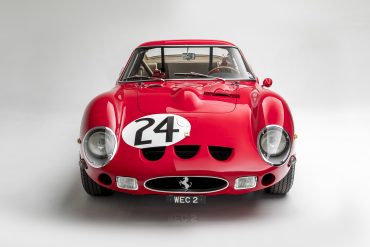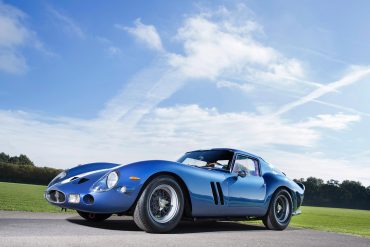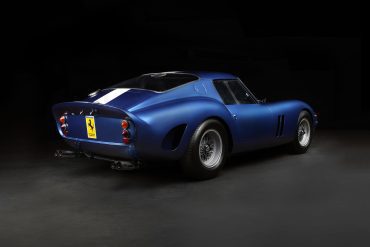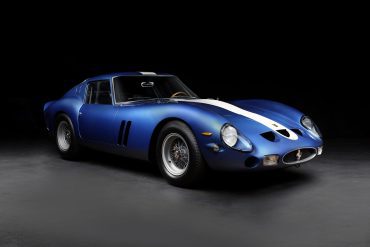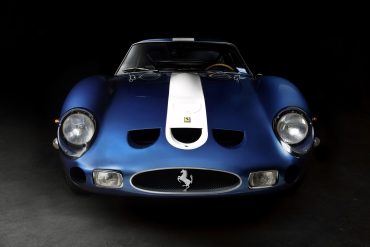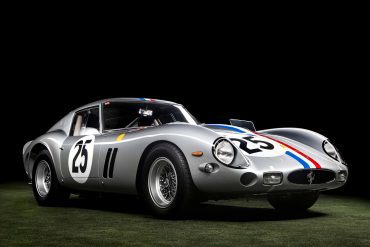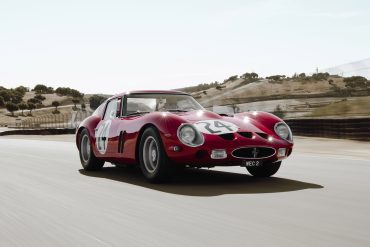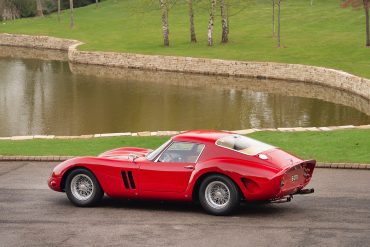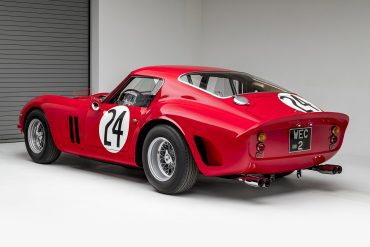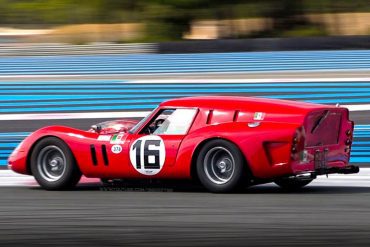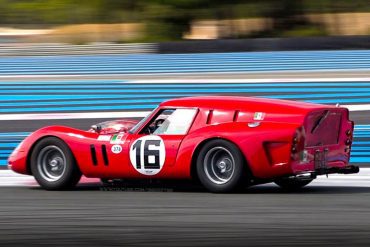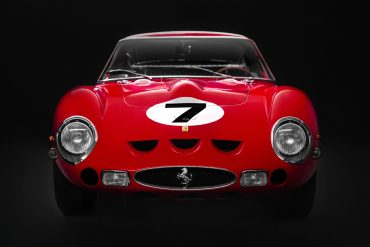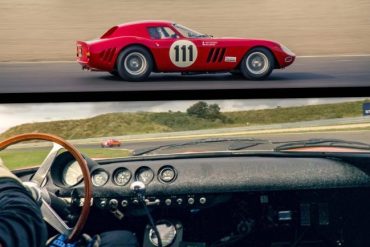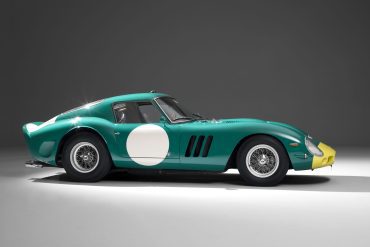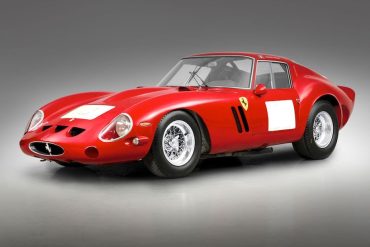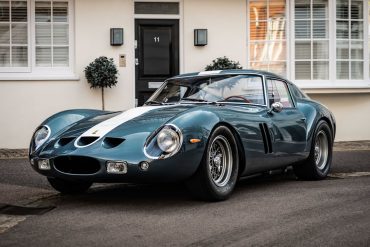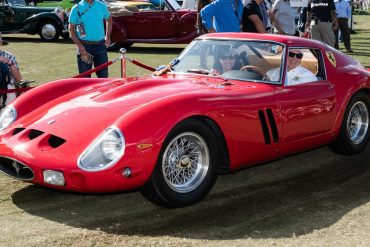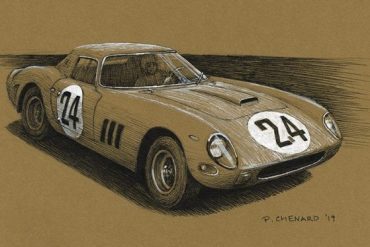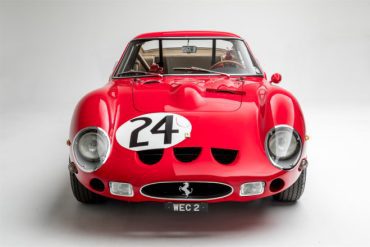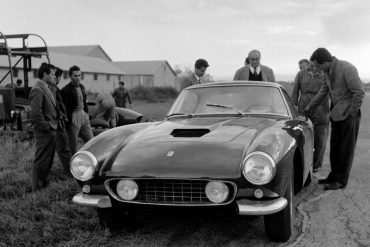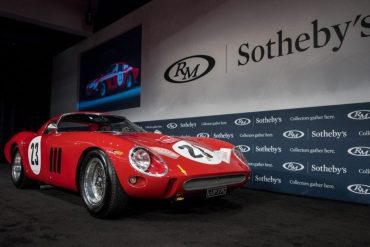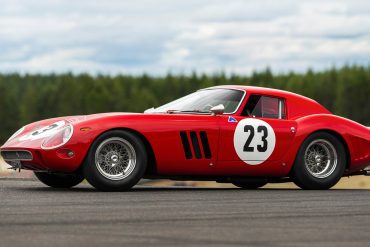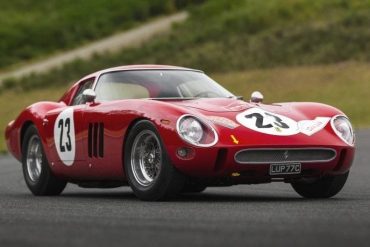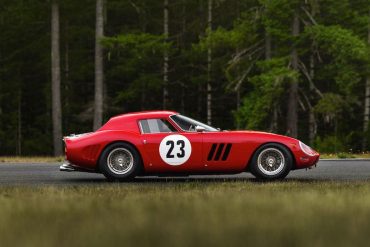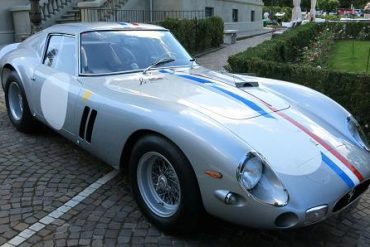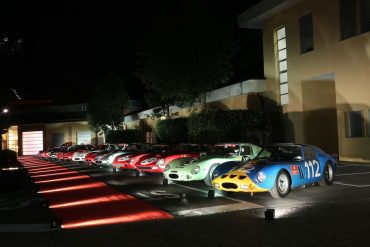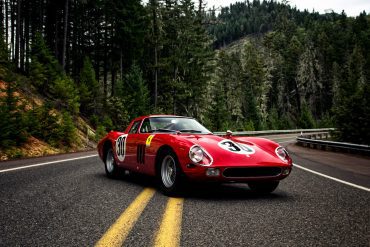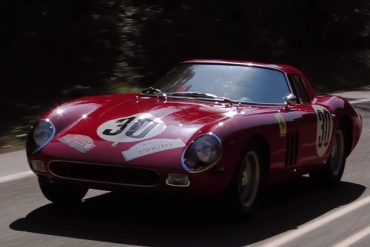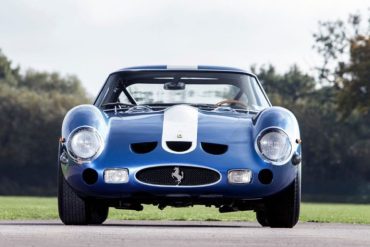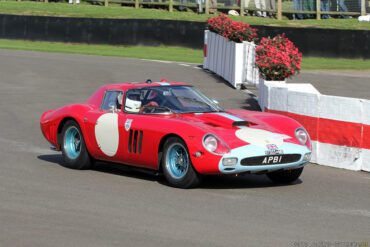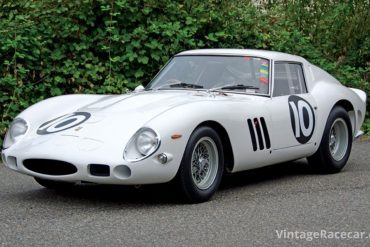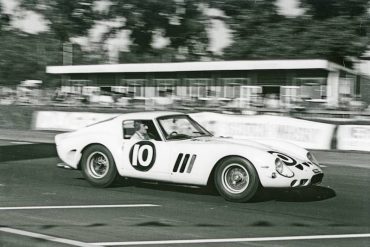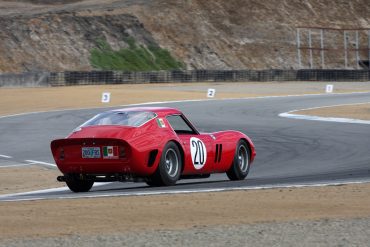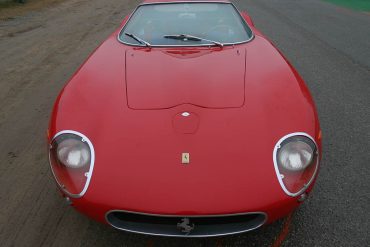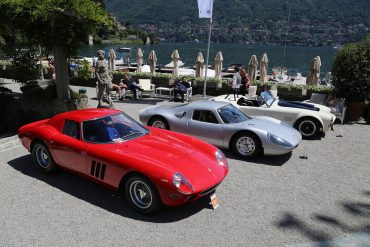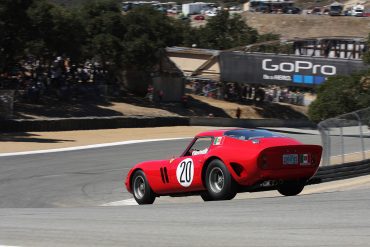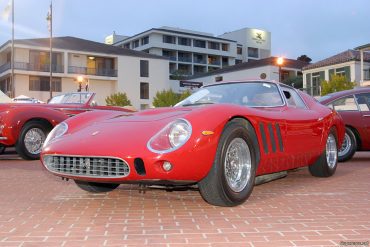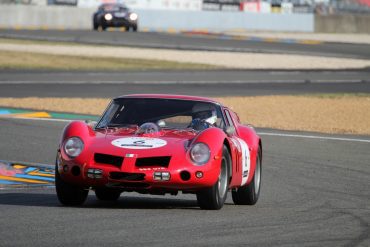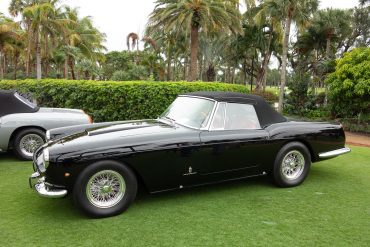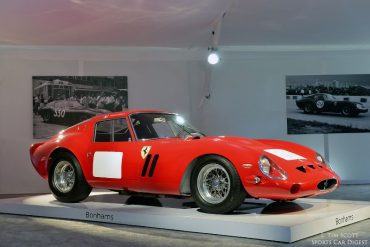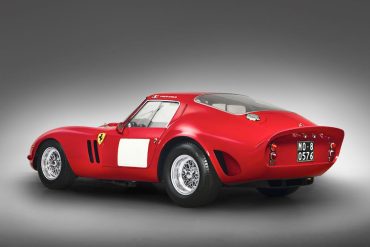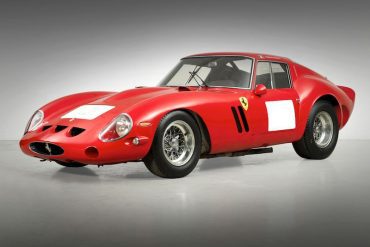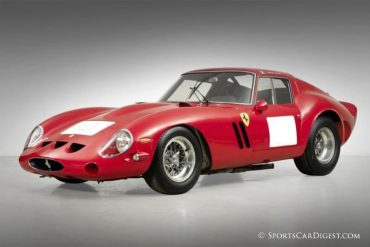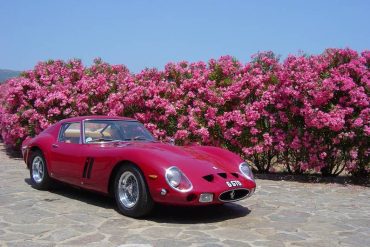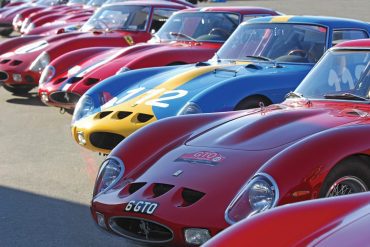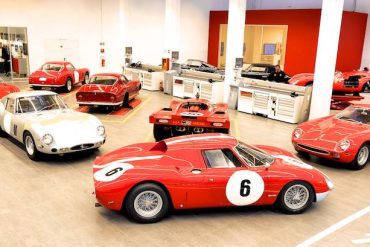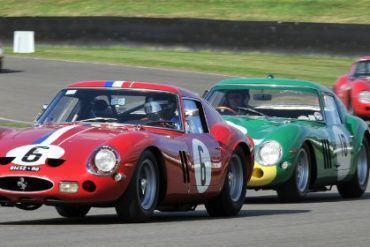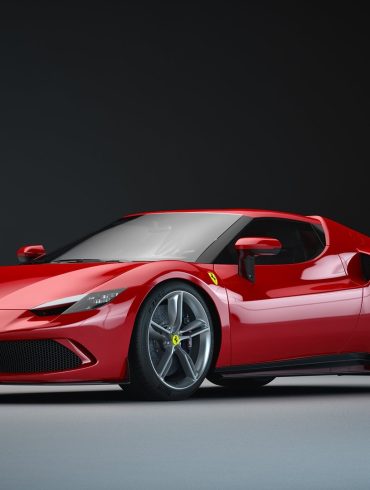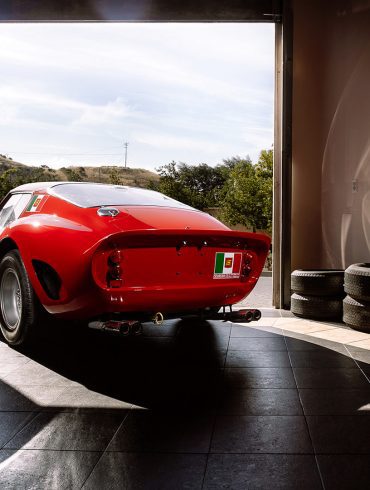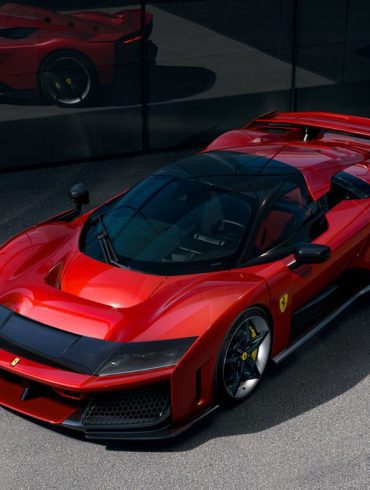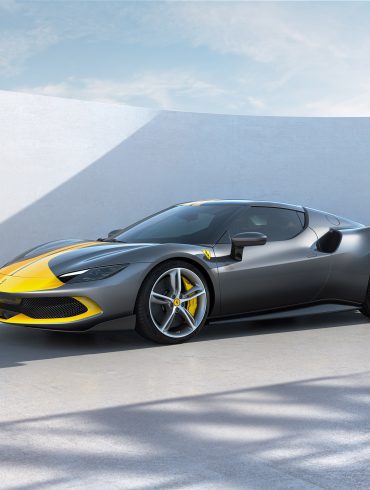Ferrari 250 GTO
The Ultimate Guide
The 250 GTO model was the pinnacle of development of the 250 GT series in competition form, whilst still being a road car. It made its public debut at the annual pre-season Ferrari press conference in January 1962, and was the only front engine model on display, with its monoposto and sports racing counterparts all having a mid-engine configuration. Fitted with the Tipo 168/62 Comp V12 engine.
Overview / Variants / Models In-Depth / Featured Stories / The Market / Videos / Images / More Updates
Ferrari 250 GTO
In the early 1960s, Ferrari found itself at a crossroads. The world of motorsport was changing rapidly, with new technologies and rival manufacturers pushing the boundaries of speed and endurance. Ferrari, already a dominant force in racing, knew it needed a car that could not only keep pace but set a new standard. Out of this pressure to evolve came the Ferrari 250 GTO, a car that would go on to become a symbol of perfection, admired not just for its victories but for the mythic legacy it created.
The 250 GTO didn’t arrive as a standalone marvel; its roots lay firmly in the lessons Ferrari had learned from the 250 GT Short Wheelbase, or SWB. The SWB had been a spectacular machine, a winner in races like the Tour de France Automobile and Le Mans. It was fast, agile, and reliable, but as the competition intensified, Ferrari realized it needed more. Aerodynamics, speed, and endurance were becoming critical to success in the fiercely competitive FIA GT racing category.
The GTO project was Ferrari’s answer. Giotto Bizzarrini, a brilliant engineer, began by taking the sturdy chassis of the SWB and reshaping it into something more purposeful. The lines of the car were refined, tested, and honed for aerodynamics. A long, flowing nose and a distinctive Kamm tail were introduced to reduce drag while keeping the car stable at high speeds. Meanwhile, Sergio Scaglietti crafted the aluminum bodywork, ensuring it was as light as it was breathtakingly beautiful. The result was a car that looked like it was born for speed, even standing still.
Underneath its sculpted body, the GTO carried the beating heart of Ferrari’s racing pedigree—the Colombo 3.0-liter V12 engine. This wasn’t just any engine; it had been refined to perfection, producing 300 horsepower and capable of propelling the GTO past 170 mph. Paired with a lightweight tubular steel frame and a racing-tuned suspension, the GTO became a weapon on wheels, ready to take on the world’s toughest circuits.
The GTO made its debut in 1962, entering the FIA’s Group 3 Grand Touring category. Despite being billed as an evolution of the SWB to meet homologation requirements, it was clear that the GTO was a revolution in its own right. It didn’t take long for the car to make its mark. In its first season, the GTO helped Ferrari capture the FIA GT Constructors’ Championship, an achievement it would repeat in 1963 and 1964.
Races like the 24 Hours of Le Mans, the Tour de France Automobile, and the 12 Hours of Sebring became stages for the GTO to shine. At Le Mans, it won its class three years in a row, consistently outrunning its GT rivals and often finishing near the top of the overall standings. The Tour de France Automobile became something of a GTO showcase, with the car taking overall victories in 1963 and 1964. Its combination of speed, agility, and durability made it almost unbeatable in the GT category.
What set the GTO apart wasn’t just its technical brilliance or its dominance on the track. It was the way it blurred the line between race car and road car. Owners could drive their GTO to the circuit, compete in a grueling endurance race, and drive it home—all without sacrificing comfort or reliability. This versatility made it a favorite among gentleman racers, who valued its blend of performance and prestige.
Despite its meteoric success, Ferrari only built 36 examples of the 250 GTO, including three later Series II models. Each car was unique, subtly tailored to its owner or its racing needs. This exclusivity, combined with its racing pedigree, ensured that the GTO would become one of the most coveted cars in history.
Today, the Ferrari 250 GTO is more than just a car. It’s a piece of history, a rolling work of art, and a symbol of a golden era in motorsport. Collectors vie for the chance to own one, with auction prices climbing into the tens of millions. But beyond its monetary value, the GTO remains a dream for enthusiasts. Its legacy is etched in the victories it claimed, the tracks it conquered, and the hearts it continues to captivate.
The 250 GTO wasn’t just built to win races; it was built to be remembered. And more than half a century later, it’s clear that Ferrari succeeded in creating not just a car but a legend.
Ferrari 250 GTO Specs
Manufacturer: Ferrari
Production: 1962–1964
Produced: 36 units
Designer: Giotto Bizzarrini, Sergio Scaglietti
Class: Sports car
Body style: 2-door berlinetta
Layout: Front-engined, RWD
Engine: 2,953 cc Tipo 168 Comp/62 60º V12
Valvetrain: 6 Weber 38 DCN carburetors
Compressio ratio: 9.7:1
Power: 296 hp @ 7500 rpm
Torque: 217 lb/ft @ 5500 rpm
Trans: 5-speed manual
Wheelbase: 2,400 mm (94.5 in)
Length: 4,325 mm (170.3 in)
Width: 1,600 mm (63.0 in)
Height: 1,210 mm (47.6 in)
Curb weight: 1,940–2,094 lb
Predecessor: Ferrari 250 GT SWB
Successor: Ferrari 250 LM, Ferrari 288 GTO
Did You Know?
Only 36 GTOs were ever built between 1962 and 1964. This exclusivity makes it one of the most sought-after cars in the world.
The GTO was created to compete in the FIA's Group 3 Grand Touring Car category. It dominated races like the Tour de France Automobile and the 24 Hours of Le Mans, cementing its place in motorsport history.
The first GTO prototype actually used a modified 250 GT SWB (Short Wheelbase) chassis and wore a rather crude body. It earned the nickname "Il Mostro" (The Monster) because of its rough appearance.
GTOs have consistently shattered auction records. In 2018, one sold for a staggering $70 million in a private sale, making it the most expensive car ever sold at the time
Driving a GTO is something special. It is a very forgiving car, easy to drive and very fast.
Sir Stirling Moss
The Ferrari 250 GTO Story
The Development of the Ferrari 250 GTO
The Ferrari 250 GTO stands as one of the most revered sports cars in history, a machine that seamlessly blended racing dominance with an unmistakable aura of elegance and exclusivity. Yet, its creation was far from straightforward. Born out of necessity to meet the challenges of a rapidly evolving motorsport landscape, the 250 GTO was a culmination of Ferrari’s technical expertise and its relentless pursuit of perfection.
In the late 1950s, Ferrari’s 250 GT Short Wheelbase (SWB) was the gold standard for grand touring race cars. Compact, lightweight, and powered by the Colombo 3.0-liter V12 engine, it had dominated the endurance racing scene, winning at Le Mans, the Targa Florio, and the Tour de France Automobile. But as the 1960s began, the competition was catching up. Cars like the Jaguar E-Type were bringing new levels of speed and sophistication, and Ferrari knew it needed a fresh approach to stay competitive. The SWB was the foundation, but it was clear that a more aerodynamic, powerful, and refined car was required to meet the growing demands of the FIA’s Group 3 Grand Touring Car regulations.
The birth of the 250 GTO was driven as much by regulation as it was by innovation. To qualify as a GT car, Ferrari needed to produce at least 100 units of the model, a significant number for a company that specialized in exclusivity. However, Ferrari, true to its resourceful nature, bent the rules, presenting the GTO as an evolution of the SWB rather than an entirely new car. This sleight of hand allowed Ferrari to proceed without producing large numbers, focusing instead on crafting a limited run of what would become the most celebrated GT car of its time.
At the heart of the 250 GTO was the Colombo V12 engine, already proven in Ferrari’s Testa Rossa and SWB models. For the GTO, it was refined to produce 300 horsepower, delivering a potent combination of speed and reliability. This powerplant was paired with a chassis derived from the SWB but significantly revised to improve rigidity and handling. Every detail was meticulously tuned to ensure the car could handle the rigors of long-distance endurance racing while maintaining the finesse expected of a Ferrari.
A key focus of the GTO’s development was aerodynamics. Ferrari had begun to embrace the importance of airflow management, and the GTO’s design reflected this new understanding. The car’s sleek, low nose, long bonnet, and signature Kamm tail were all crafted to reduce drag while enhancing stability at high speeds. The bodywork, shaped by Sergio Scaglietti, achieved a rare harmony between function and form. Every curve served a purpose, yet the result was undeniably beautiful, a testament to Ferrari’s ability to marry engineering with artistry.
The team behind the GTO was as remarkable as the car itself. Giotto Bizzarrini, Ferrari’s brilliant engineer, led the initial development, channeling his racing expertise into the car’s design. However, internal turmoil at Ferrari led to his departure before the project was complete. Mauro Forghieri stepped in to finish the job, refining the car’s mechanical setup and ensuring it was ready to face the competition. Despite these disruptions, the team delivered a car that was not only competitive but revolutionary.
The 250 GTO made its racing debut in 1962, and it wasted no time proving its worth. It won the FIA GT World Championship in its first year, a feat it would repeat in 1963 and 1964. The GTO excelled in events like the 24 Hours of Le Mans, the Tour de France Automobile, and the 12 Hours of Sebring, often competing against—and defeating—cars with significantly more advanced technology. It was not just fast; it was reliable, durable, and perfectly suited to the grueling demands of endurance racing.
What set the 250 GTO apart was its duality. While it was a thoroughbred race car, it was also a road car, capable of being driven to the track, raced, and then driven home. This versatility made it appealing to gentleman racers who valued both performance and prestige. With just 36 units produced (plus three later Series II models), owning a GTO was—and remains—a symbol of exclusivity.
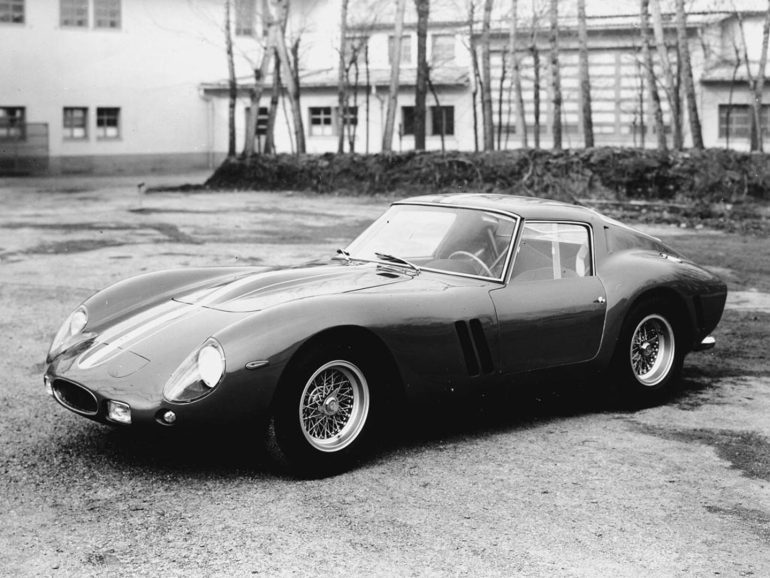
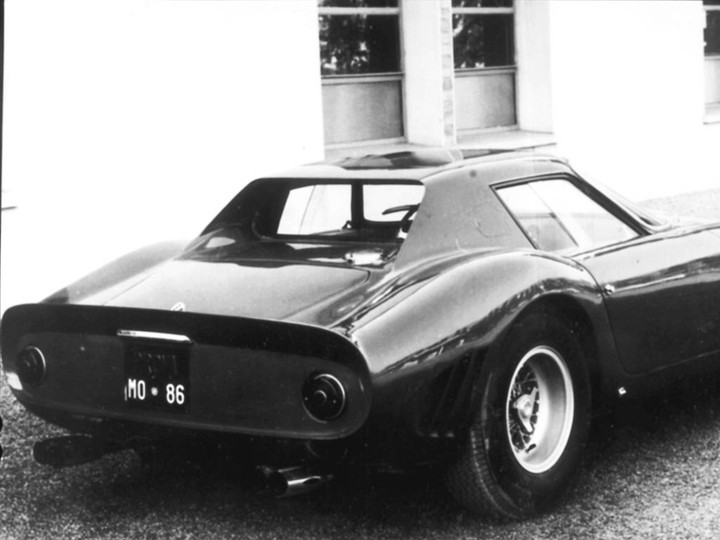
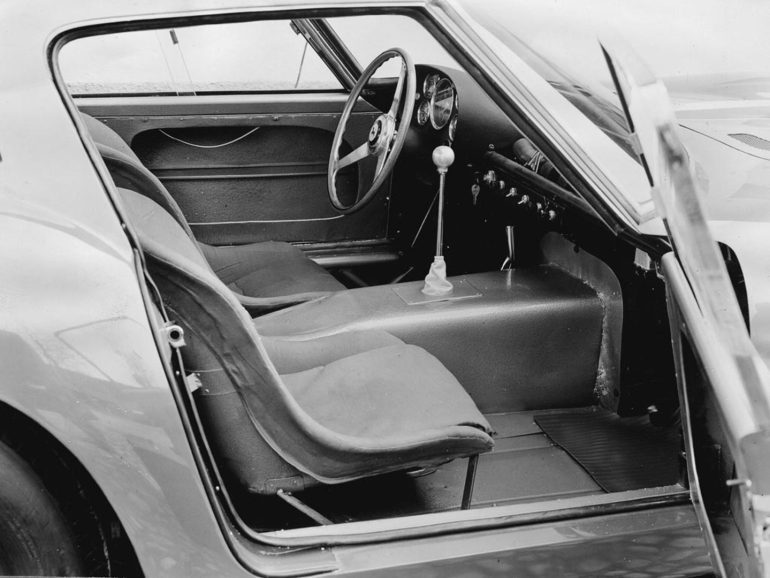
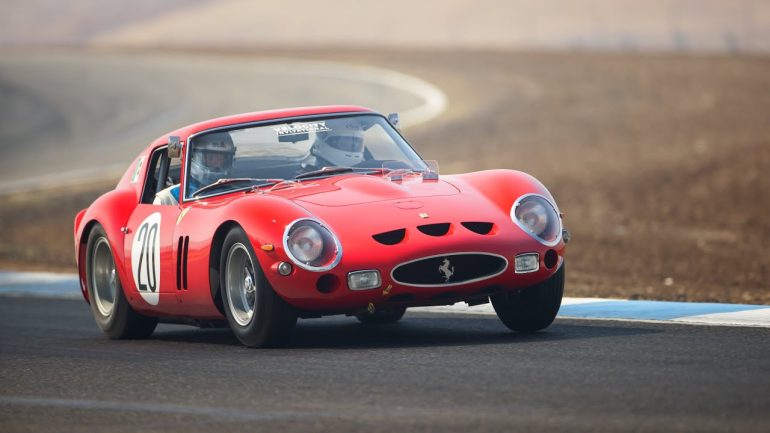

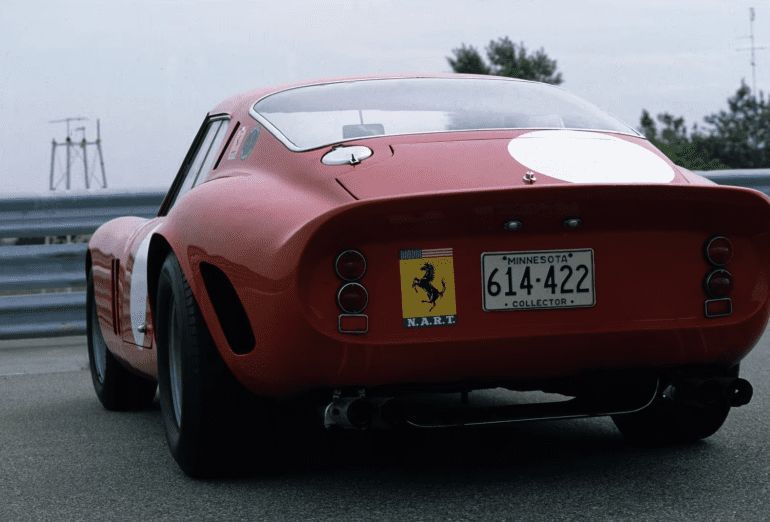
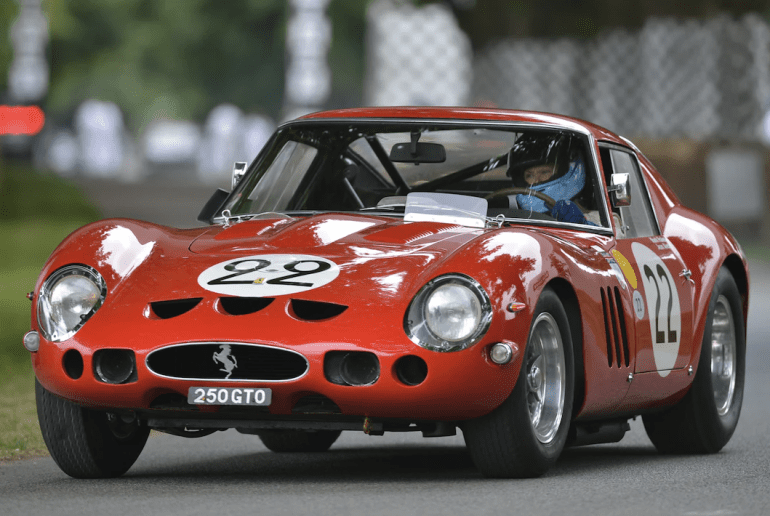
The Ferrari 250 GTO's Motorsport Heritage and Triumphs
The Ferrari 250 GTO is not just a car—it’s a symbol of dominance, precision, and resilience in motorsport. Built to compete under FIA’s Group 3 Grand Touring regulations, the GTO carved its name into the annals of racing history with a string of victories that showcased its engineering brilliance and the competitive spirit of Ferrari. Between 1962 and 1964, the 250 GTO conquered the racetrack with an unprecedented level of consistency, capturing championships and winning some of the most prestigious races of its time.
The 250 GTO was born from Ferrari’s desire to retain its supremacy in endurance racing during the early 1960s. Its combination of the Colombo 3.0-liter V12 engine, advanced aerodynamics, and a refined chassis made it a versatile weapon in GT racing, suitable for a wide range of tracks and conditions. The car’s reliability, speed, and handling allowed it to excel not just as a frontrunner but also as a consistent performer over grueling races.
The Ferrari 250 GTO’s greatest achievement was its back-to-back-to-back victories in the FIA GT World Championship from 1962 to 1964. During this era, the championship was the ultimate proving ground for grand touring cars, requiring competitors to excel in multiple endurance events.
1962: In its debut year, the 250 GTO was an immediate success. Ferrari won the FIA GT Constructors’ Championship, thanks to the GTO’s consistent podium finishes and outright victories.
1963: The GTO’s dominance continued as Ferrari retained the Constructors’ title. Its mix of speed and durability made it nearly unbeatable in the GT class.
1964: The GTO helped Ferrari secure its third consecutive Constructors’ title, cementing its legacy as one of the most successful GT cars in history.
The 250 GTO was a fixture at the most prestigious endurance races of the early 1960s. Here are some of its most notable victories:
24 Hours of Le Mans
The 250 GTO made its mark at the world’s most famous endurance race by winning the GT class at Le Mans in 1962, 1963, and 1964. While it competed against powerful prototypes in the overall standings, the GTO’s reliability and speed ensured that it dominated the GT category, often finishing near the top of the overall results.
Tour de France Automobile
The GTO was synonymous with success in the Tour de France Automobile, a grueling multi-stage race that combined circuit racing, hill climbs, and public road sections. The car won the event in 1963 and 1964, further solidifying its reputation as a versatile and robust racer.
12 Hours of Sebring
At the 12 Hours of Sebring, the GTO demonstrated its endurance racing pedigree, winning the GT class multiple times, including its debut in 1962. The Florida heat and challenging track conditions highlighted the car’s durability and reliability.
Targa Florio
The Targa Florio, a demanding road race through the mountainous roads of Sicily, was another stage where the GTO excelled. Its lightweight design and agile handling made it ideal for the tight, technical roads of the event, contributing to class victories during its competitive years.
Legacy in Motorsport
The Ferrari 250 GTO’s racing record is a testament to its engineering brilliance and adaptability. In total, the car secured:
Over 300 victories across various races and series during its competitive years.
Multiple podium finishes in major endurance events, even against prototype competitors.
The foundation for Ferrari’s continued dominance in GT racing throughout the 1960s.
Even as regulations changed and newer models emerged, the GTO remained competitive in the hands of privateer teams. Many of these privately entered cars carried forward Ferrari’s legacy in GT racing, winning regional and national championships around the world.
The 250 GTO’s motorsport success is largely thanks to its combination of reliability, versatility, a driver-friendly design and superior aerodynamics. In endurance racing, where mechanical failures often determine the outcome, the GTO’s sturdy V12 engine and robust construction gave it an edge over its rivals. The GTO excelled on a variety of tracks, from high-speed circuits like Le Mans to twisty road races like the Targa Florio, thanks in part to its predictable handling and forgiving nature which made it a favorite among both professional drivers and gentleman racers. While Enzo Ferrari said that '"aerodynamics are for people who can’t build engines”, the sleek, wind-tunnel-tested body of the 250 GTO improved top speeds and stability in a way that hadn't been done before.
It was a fantastic car, the best GT car in the world.
Phil Hill


